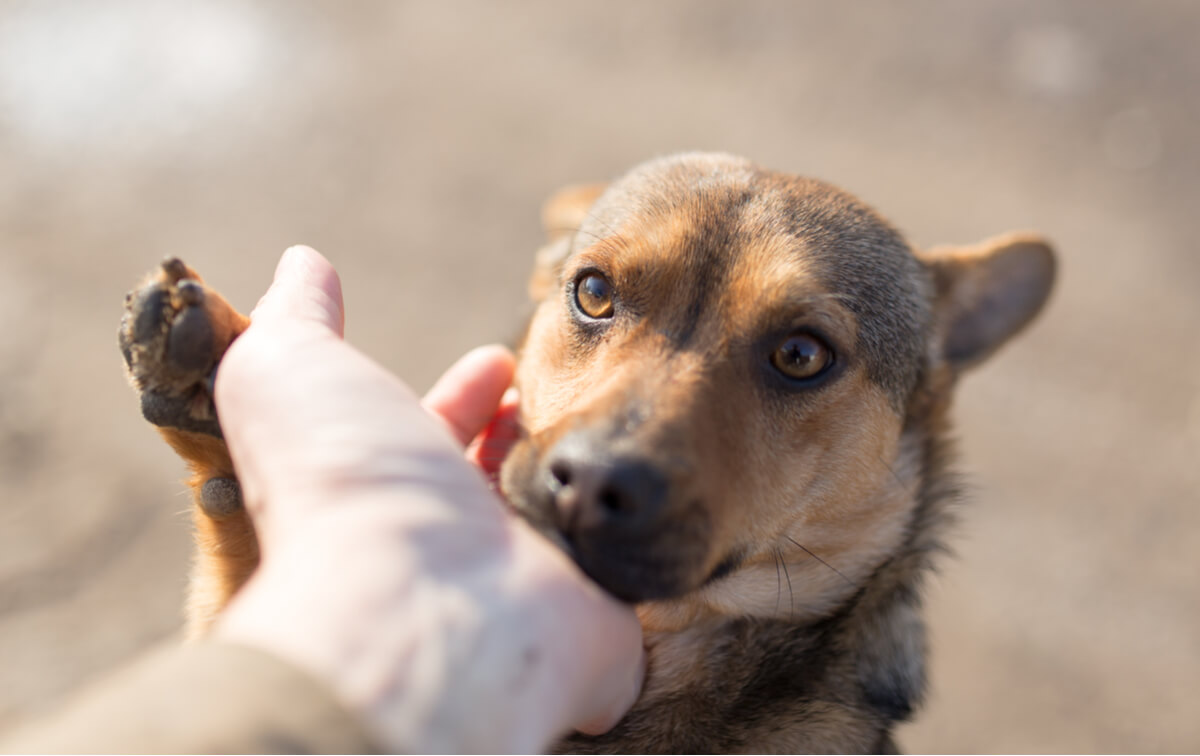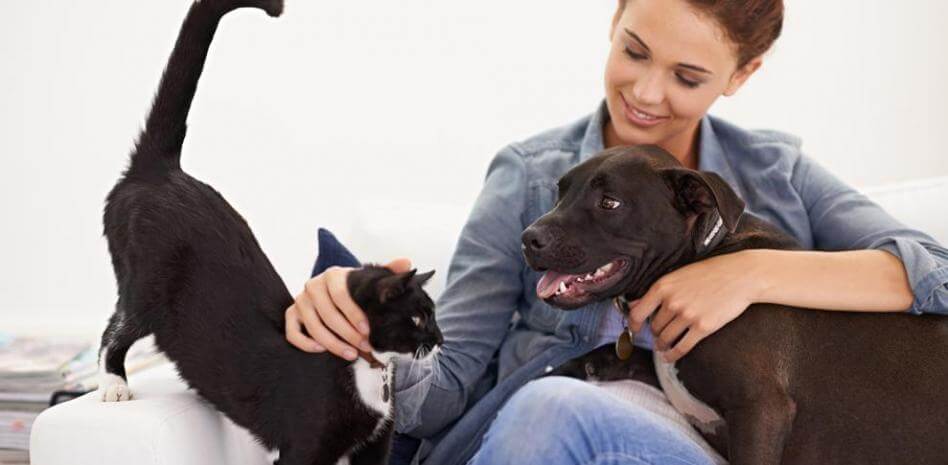The Influence of Emotions on Pets


Written and verified by the veterinarian and zootechnician Sebastian Ramirez Ocampo
Unlike other domesticated animals, dogs and cats have a closer and more special relationship with humans. But what is the influence of emotions on pets?
For example, dogs have developed the ability to understand different human body signals. This has possibly been due to the need for survival or for collaboration in work or leisure activities. As stated in an article published in Psychology Research & Behavior Management magazine, these situations have generated a bond between dogs and their owners, similar to that of a small child with its parents.
On the other hand, although cats are considered solitary animals, recent studies have shown that they have social skills similar to those of dogs, although a little less developed. Likewise, in spite of their reputation of being independent, the relationship between cat and their owners will determine their well-being.
Pets are specialists in detecting human emotions

According to different studies, dogs have the ability to interpret our facial expressions and perceive the intonation of our words. Moreover, they are able to identify emotions such as fear or anxiety. This is due to the ability to detect changes in body odor or the emission of certain hormones.
A study published in the journal Learning & Behavior found that dogs respond to basic emotions reflected in people’s faces, such as anger, fear, happiness, sadness, surprise, and disgust. Likewise, in stressful situations such as when hearing a baby whine, they produce the hormone cortisol, just as humans do.
Among other things, many people are also able to identify emotions in animals. For example, two studies conducted in the United Kingdom found that more than 80% of owners recognized primary emotions such as joy or sadness in their pets. On the other hand, more than 50% saw secondary emotions such as shame or pride.
How moods influence our pets
Known as interspecies emotional contagion, the close connection between humans and their pets means that animals such as dogs or cats can feel, understand, and share our emotions. This transmission depends mainly on the release of hormones such as oxytocin and the change in body odor in humans. It’s also influenced by the activation of certain neurons and physiological processes in both animals and their owners.
For example, when people project feelings of calm and confidence, dogs tend to interpret their environment as safe. Likewise, if feelings of joy or happiness are conveyed, pets will reflect these emotions in their behavior. This will manifest itself in low aggression and high sociability.
Dogs also have the ability to understand the emotions of humans that are important to them. As an example of this, research published in the journal Canadian Journal of Experimental Psychology evaluated the reactions of different dogs to people pretending to cry or laugh. They found that dogs showed greater attention to those who were crying.
Negative emotions
However, the negative emotions we feel also have a great impact on our pets. Toxic or unstable emotional environments can provoke unwanted behaviors in our pets. They may vomit, defecate in places they don’t usually, or, in worse cases, develop diseases.
In the same way, aggressive environments will make the pet acquire this type of behavior. Because of this, the animal will be in constant stress and a state of alert.
In cats, it has been demonstrated that their owner’s emotional instability can produce more aggressive and anxious behavior. They can also manifest abnormal attitudes, such as urinating or defecating in places they hadn’t before.

Healthy environments
It could be said that our pets have adapted perfectly to human life, albeit with different mental and social skills. This interaction has reached a point where our moods can directly influence how they may feel at any given moment.
For this reason, we need to create healthy lifestyles in our homes. We must seek emotional harmony for the benefit of ourselves and our pets.
We should avoid aggressive behavior or high-stress situations, and maintain routines where we meet our pets’ basic needs, such as food, physical activity, and emotional care, are met.
Unlike other domesticated animals, dogs and cats have a closer and more special relationship with humans. But what is the influence of emotions on pets?
For example, dogs have developed the ability to understand different human body signals. This has possibly been due to the need for survival or for collaboration in work or leisure activities. As stated in an article published in Psychology Research & Behavior Management magazine, these situations have generated a bond between dogs and their owners, similar to that of a small child with its parents.
On the other hand, although cats are considered solitary animals, recent studies have shown that they have social skills similar to those of dogs, although a little less developed. Likewise, in spite of their reputation of being independent, the relationship between cat and their owners will determine their well-being.
Pets are specialists in detecting human emotions

According to different studies, dogs have the ability to interpret our facial expressions and perceive the intonation of our words. Moreover, they are able to identify emotions such as fear or anxiety. This is due to the ability to detect changes in body odor or the emission of certain hormones.
A study published in the journal Learning & Behavior found that dogs respond to basic emotions reflected in people’s faces, such as anger, fear, happiness, sadness, surprise, and disgust. Likewise, in stressful situations such as when hearing a baby whine, they produce the hormone cortisol, just as humans do.
Among other things, many people are also able to identify emotions in animals. For example, two studies conducted in the United Kingdom found that more than 80% of owners recognized primary emotions such as joy or sadness in their pets. On the other hand, more than 50% saw secondary emotions such as shame or pride.
How moods influence our pets
Known as interspecies emotional contagion, the close connection between humans and their pets means that animals such as dogs or cats can feel, understand, and share our emotions. This transmission depends mainly on the release of hormones such as oxytocin and the change in body odor in humans. It’s also influenced by the activation of certain neurons and physiological processes in both animals and their owners.
For example, when people project feelings of calm and confidence, dogs tend to interpret their environment as safe. Likewise, if feelings of joy or happiness are conveyed, pets will reflect these emotions in their behavior. This will manifest itself in low aggression and high sociability.
Dogs also have the ability to understand the emotions of humans that are important to them. As an example of this, research published in the journal Canadian Journal of Experimental Psychology evaluated the reactions of different dogs to people pretending to cry or laugh. They found that dogs showed greater attention to those who were crying.
Negative emotions
However, the negative emotions we feel also have a great impact on our pets. Toxic or unstable emotional environments can provoke unwanted behaviors in our pets. They may vomit, defecate in places they don’t usually, or, in worse cases, develop diseases.
In the same way, aggressive environments will make the pet acquire this type of behavior. Because of this, the animal will be in constant stress and a state of alert.
In cats, it has been demonstrated that their owner’s emotional instability can produce more aggressive and anxious behavior. They can also manifest abnormal attitudes, such as urinating or defecating in places they hadn’t before.

Healthy environments
It could be said that our pets have adapted perfectly to human life, albeit with different mental and social skills. This interaction has reached a point where our moods can directly influence how they may feel at any given moment.
For this reason, we need to create healthy lifestyles in our homes. We must seek emotional harmony for the benefit of ourselves and our pets.
We should avoid aggressive behavior or high-stress situations, and maintain routines where we meet our pets’ basic needs, such as food, physical activity, and emotional care, are met.
All cited sources were thoroughly reviewed by our team to ensure their quality, reliability, currency, and validity. The bibliography of this article was considered reliable and of academic or scientific accuracy.
- Aragunde-Kohl U, Gómez-Galán J. Interaction and Emotional Connection with Pets: A Descriptive Analysis from Puerto Rico. 2020;10(11).
- Arahori M, Kuroshima H, Hori Y, Takagi S, Chijiiwa H, Fujita K. Owners’ view of their pets’ emotions, intellect, and mutual relationship: Cats and dogs compared. Behavioural processes. 2017;141(Pt 3):316-21.
- Brahams D. How pets can reduce feelings of isolation and loneliness during Covid-19 and beyond: A personal view from London. The Medico-legal journal. 2021;89(1):2-3.
- Brooks HL, Rushton K, Lovell K, Bee P, Walker L, Grant L, et al. The power of support from companion animals for people living with mental health problems: a systematic review and narrative synthesis of the evidence. BMC psychiatry. 2018;18(1):31.
- Friedman E, Krause-Parello CA. Companion animals and human health: benefits, challenges, and the road ahead for human-animal interaction. Revue scientifique et technique (International Office of Epizootics). 2018;37(1):71-82.
- Monsen RB. Children and pets. Journal of pediatric nursing. 2001;16(3):197-8.
This text is provided for informational purposes only and does not replace consultation with a professional. If in doubt, consult your specialist.








